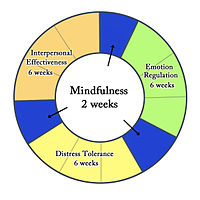
Photo from wikipedia
The purpose of this study was to assess if behavior and emotional function, as measured by the Pearson Behavioral Assessment Survey for Children, Second Edition (BASC-2) in patients and parents,… Click to show full abstract
The purpose of this study was to assess if behavior and emotional function, as measured by the Pearson Behavioral Assessment Survey for Children, Second Edition (BASC-2) in patients and parents, changes with differing treatment protocols in patients with adolescent idiopathic scoliosis (AIS). One previous study showed abnormal BASC-2 scores in a substantial number of patients diagnosed with AIS; however, no study has assessed how these scores change over the course of treatment. AIS patients aged 12 to 21 years completed the BASC-2. The 176-item questionnaire was administered to subjects at enrollment, assessing behavioral and emotional problems across 16 subscales of 5 domains: school problems, internalizing problems, inattention/hyperactivity, emotional symptoms index, and personal adjustment. Parents were given an equivalent assessment survey. Surveys were administered again after 2 years. Subject treatment groups (bracing, surgery, and observation) were established at enrollment. Patients were excluded if they did not complete the BASC-2 at both time points. Forty-six patients met the inclusion criteria, with 13 patients in the surgical, 20 in the bracing, and 13 in the observation treatment groups. At enrollment, 26% (12/46) of subjects with AIS had a clinically significant score in 1 or more subscales, and after 2 years 24% (11/46) of subjects reported a clinically significant score in at least 1 subscale (P = .8). There were no significant differences in scores between enrollment and follow-up in any treatment group. Similar to what was reported in a previous study, only 36% (4/11) of patients had clinically significant scores reported by both patient and parent, conversely 64% (7/11) of parents were unaware of their child’s clinically significant behavioral and emotional problems. Common patient-reported subscales for clinically significant and at-risk scores at enrollment included anxiety (24%; 11/46), hyperactivity (24%; 11/46), attention problems (17%; 8/46), and self-esteem (17%; 8/46). At 2-year follow-up, the most commonly reported subscales were anxiety (28%; 13/46), somatization (20%; 9/46), and self-esteem (30%; 14/46). Patients with AIS, whether observed, braced or treated surgically, showed no significant change in behavior and emotional distress over the course of their treatment, or compared with each other at 2-year follow-up.
Journal Title: Medicine
Year Published: 2023
Link to full text (if available)
Share on Social Media: Sign Up to like & get
recommendations!